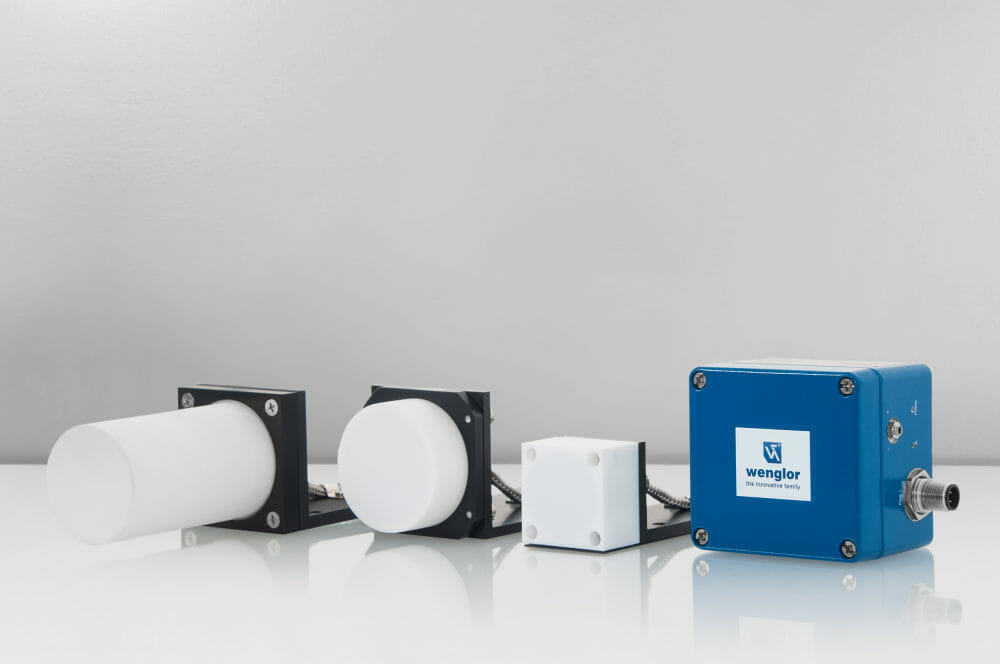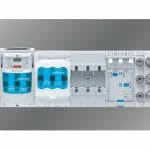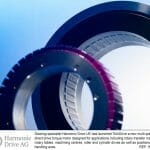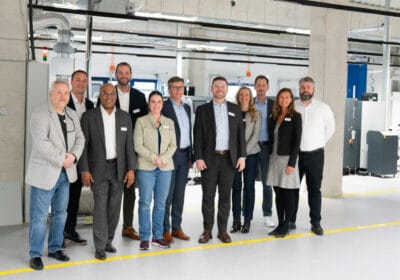Inductive Sensors from Wenglor and Wenglor MEL ensure reliable detection of
metallic objects in extreme temperature ranges. With three different sensor
series, the product portfolio covers a comprehensive range of temperatures
from -60 to +450° C. System availability is increased thanks to extended
switching distances and the patented maintenance output. With a long service
life of seven to ten years, the twelve rugged sensors are reliable, high performance
products for use in the automotive, metalworking, food and glass
industries.
The INRT450 Inductive Sensor for extreme temperature ranges is the absolute
worldwide forerunner where resistance to heat and cold is concerned. With a range
of use from -60 to +450° C and a switching distance of 25 mm, the sensor masters
demanding detection tasks in extreme temperature ranges. This is made possible by
spatial separation of the evaluation unit and the sensor head, as well as cable
lengths of 5 to 20 meters. The sensor head is made of ceramic and is thus capable
of continuously withstanding extreme heat and cold and, at the same time,
accurately detecting metallic objects. At an ambient temperature of 450° C, for
example, the sensor has a service life of 100 000 hours, which corresponds to
roughly eleven years.
Resistant to Heat and Cold – Durable
The INTT25 and INTT40 models are also highly convincing where resistance to
extreme temperatures is concerned. Equipped with a sensing distance of either 25 or
40 mm, the new sensors are designed for hot and cold zones within a range of -10 to
+250° C. The Teflon (PTFE)sensor head withstands an ambient temperature of
250° C for an impressive 60 000 hours, and even 100 000 hours at 200° C. In
particular the innovative combination of longevity and resistance to heat and cold
make wenglor’s inductive sensors especially adept.
Furthermore, all models include a patented maintenance output which draws prompt
attention to maintenance and repair cycles thus preventing costly system downtime.
The extended switching distances of 25 and 40 mm can be selected easily and
conveniently with a potentiometer, and the sensor heads are quick and simple to
replace.
Large Range of Applications in Extreme Temperature Ranges
The new sensors can be used in a broad range of applications: from the automotive
and metalworking industries right on up to the food and glass industries. Whether
cathodic dip painting of car parts, manufacturing of ceramic components such as
brake calipers, spark plugs and catalytic converters, or the production of tiles and
glass is involved: securing and monitoring hot zones is a central application for
wenglor’s new sensors. And they can be used in PWIS-sensitive areas because
they’re manufactured without silicon. But the core capabilities of the sensor series
also include detection tasks in cold zones such as cold storage facilities used by the
food industry for refrigeration and deep freezing.
The INRT450 Inductive Sensor for Extreme Temperature Ranges
at a Glance
• Temperature range: -60 to 450° C
• Switching distance: 25 mm
• Cable length: 5 to 20 m
• Interchangeable sensor head
INTT25 and INTT40 Inductive Sensors for Extreme Temperature Ranges
at a Glance
• Temperature range: -10 to 250° C
• Switching distances: 25 and 40 mm
• Patented maintenance output
• Cable length: 5 to 20 m
• Interchangeable sensor head







